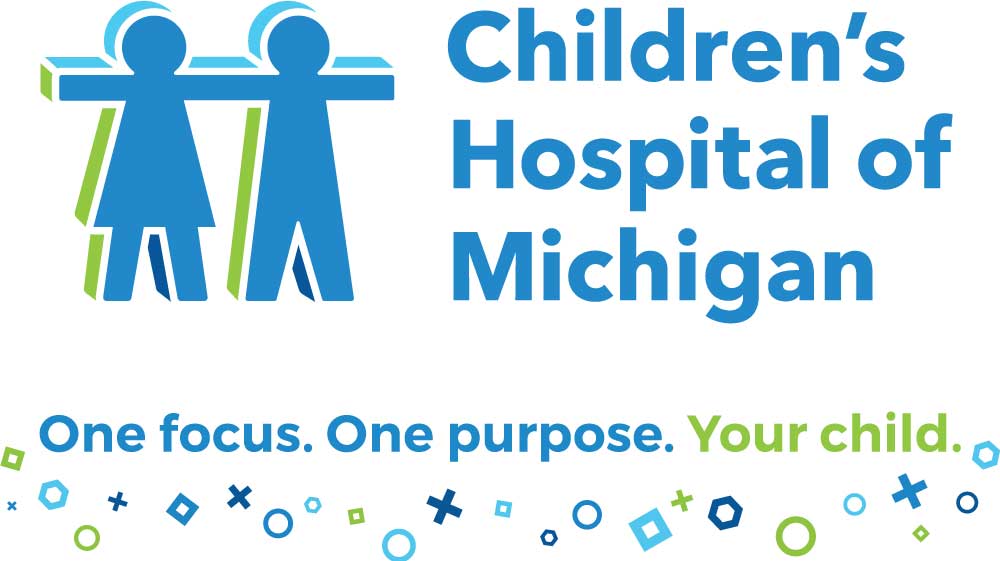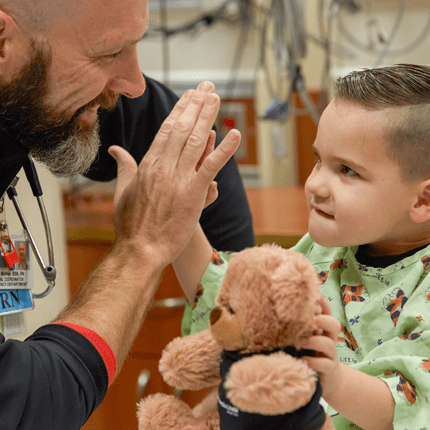LaDiamond's Sickle Cell Story
Jun 6, 2019Children's Hospital Doctor commits to giving 9-year-old normal life with Sickle Cell disease
It all started when young LaDiamond Ewing began having headaches. Her mother, Michelle Ewing, knew something was wrong. She took LaDiamond to Children’s Hospital to see Wanda Whitten-Shurney, M.D., attending pediatrician and director of the newborn screening program for sickle cell disease at Children’s Hospital of Michigan.
Dr. Shurney ordered an MRI and an MRA (an X-ray that examines blood vessels). The images revealed narrowed blood vessels in LaDiamond’s brain — one of many complications of sickle cell disease — and a condition that put LaDiamond at risk for stroke. Fortunately, Dr. Shurney and her team had quickly made the diagnosis and were able to deliver treatment that would prevent a stroke from happening.
“We give LaDiamond transfusions once a month,” explains Dr. Shurney. “This keeps the amount of her sickle hemoglobin at a manageable level, making it far less likely a blockage in the blood vessels will occur.”
Not all children with sickle cell disease receive transfusions. In fact, out of about 700 patients with sickle cell disease at Children’s Hospital, only 30 receive transfusions on a regular basis. “The clinical course is very variable. Every child is different,” Dr. Shurney points out. “Different patients have different problems; some patients have a more severe disease course than others.” One thing that is true for all patients is the fact that sickle cell is a lifelong disease. Dr. Shurney works hard to ensure her patients understand the disease early on. “When I talk to children about sickle cell disease, I tell them it is a disease of your red blood cells,” she says. “I show them pictures of red blood cells and explain how these cells deliver oxygen to all the different parts of your body. When you have sickle cell disease, some of your red blood cells are shaped like a farmer’s sickle. Many children don’t know what a sickle is, so I also have a picture of a banana, which is a similar shape.”
Dr. Shurney then explains the two main problems of having these crescent-shaped cells. One problem is the sickle cells sometimes cause blockage in the blood vessels. In addition, sickle red blood cells don’t last as long as normal red blood cells. Most of the health problems of sickle cell disease — such as pain, fatigue, and even stroke — can be explained by those two facts.
Dr. Shurney is committed to the treatment of sickle cell disease for many reasons. For one, she loves children. She also seeks to carry on the legacy of her father, Charles F. Whitten, M.D. who started the sickle cell clinic at Children’s Hospital in conjunction with Wayne State University over 30 years ago. “This is just a remarkable place,” says Dr. Shurney. “Everyone here is so committed. Beverly, the receptionist, has been with us for 31 years. Carmen, the phlebotomist who collects blood from our patients, has been here over 26 years. She’s everyone’s favorite person because she eases them through their fears and scary periods. Ingrid Sarnaik, M.D., a pediatric hematologist, is the director of the clinic and has been taking care of children with sickle cell disease for over 25 years.”
Michelle Ewing, LaDiamond’s mother, concurs. While transfusions will always be a part of LaDiamond’s life, her treatment at Children’s Hospital of Michigan is enabling her to live a normal, productive life. She can swim, dance, jump rope and ride her bike like any other 9-year-old child.
“They really work with you at Children’s Hospital, and they treat you with kindness,” Michelle says. “The people are just great about dealing with parental concerns. LaDiamond loved it when clowns and a man with a friendly dog visited her when she was very sick. And when I stayed by her side over night, they brought me food, they gave me blankets and they showed me where I could take a shower in the morning. LaDiamond and I love Dr. Shurney as much as we love my sister or my mother. We love this whole hospital. I wouldn’t change it for the world. And I certainly wouldn’t take LaDiamond anywhere else.”




